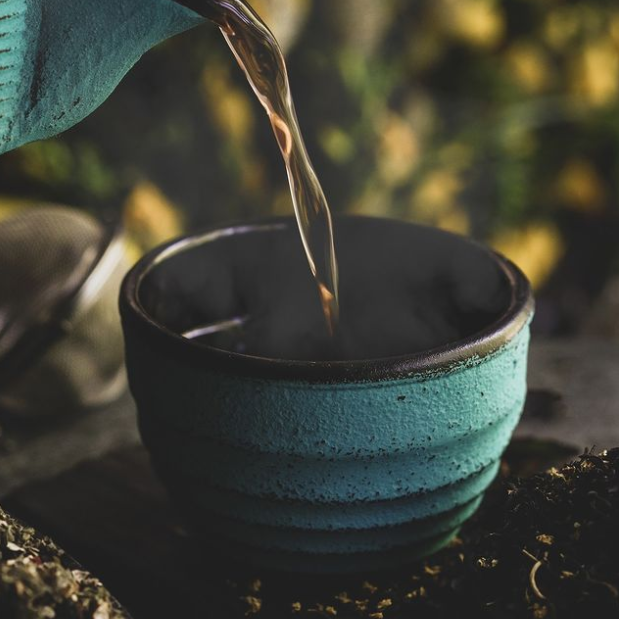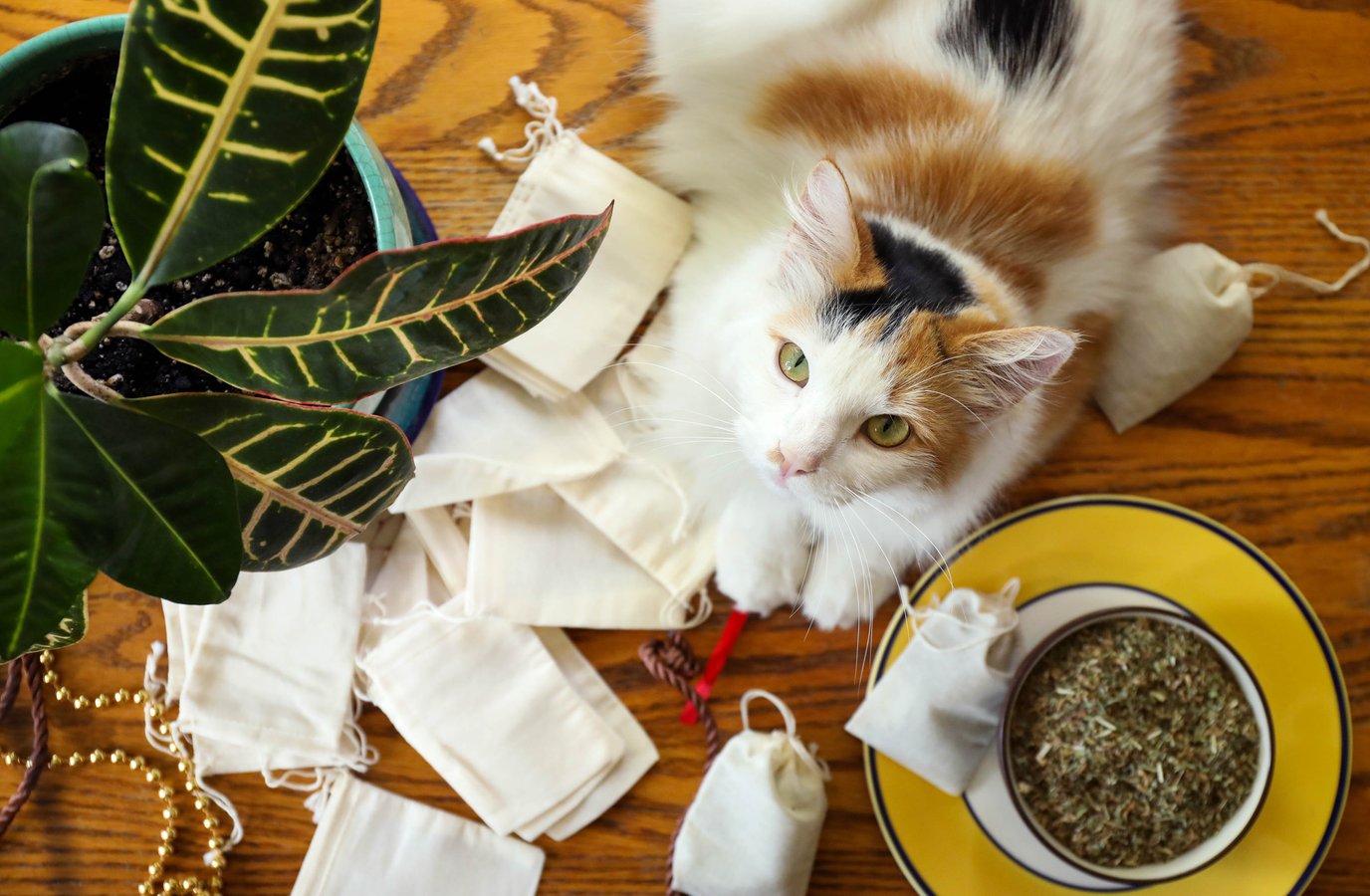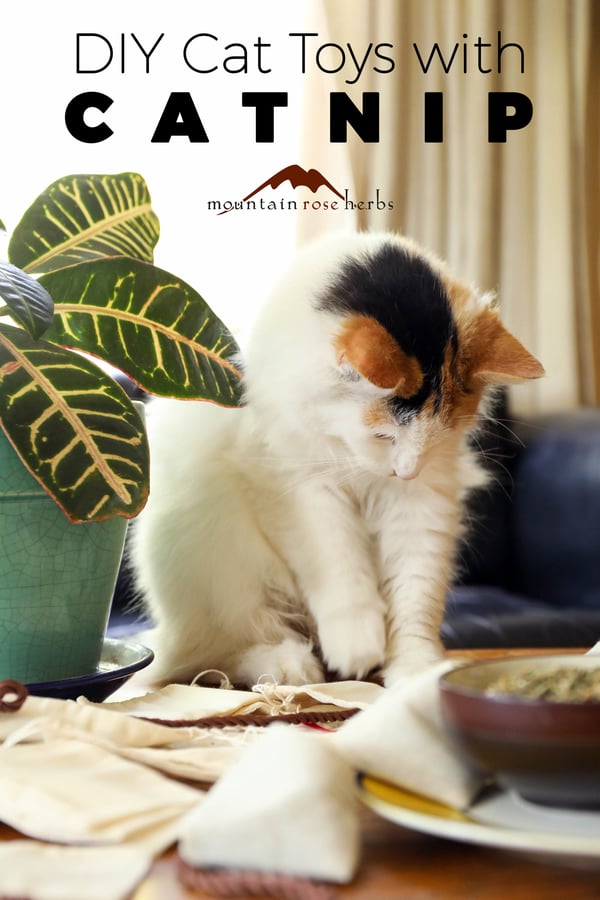Nepeta cataria, commonly called catnip, is an ancient member of the mint family. It has been used in western folk practices for millennia, and is loved for its gentle, calming properties. Herbalists and parents often brew this child-friendly herb into a soothing tisane, but it can also be taken internally as a tincture. For topical use, catnip can be infused in oils, or used as an essential oil or hydrosol to bring an herbaceous, relaxing scent to body care products. Perhaps, however, catnip is best known as the herb most loved by our feline friends.
What is Catnip Used For?
It is said that the genus name, Nepeta, is a reference to the Etruscan city of Nepete, which was overthrown by the Romans back in the Iron Age. As well as their desire for Etruscan city states, the Romans, and presumably their cats, were great fans of the local mint both as a culinary addition and as a health-supportive herb.
“Nep” or “catmint” also showed up regularly in medieval European medical texts and was considered such a home-apothecary staple that European immigrants to the Americas brought plant cuttings with them in the early 18th century. It was here that the herb became “catnip.” According to America in So Many Words, by Allan Metcalf and David Barnhart, the first evidence of “catnip” is from a Massachusetts recipe from 1712: “He boiled tansy, sage, hyssop, and catnip is some of ye best wort.” Indigenous communities quickly incorporated this wonderful herb into their healthcare regimens as both a gentle tea for children with occasional upset bellies or sleeplessness, and as a strengthening tonic.
As people migrated westward, they brought catnip cuttings with them, and by the 19th century, from the East Coast to the West Coast, catnip was American’s tea of choice for a soothing "cuppa." Today catnip, along with its other mint cousins, continues to be valued for its calming and relaxing properties. It has become such a part of the American landscape, in many places it grows pervasively as a weed.
What Does Catnip Do to Cats?
We don’t fully understand exactly how catnip gets our kitties “high.” We know that nepetalactone is the volatile oil that is released into the air when the plant is touched, and the oil is what makes cats react (including lions, tigers, and other wild cats). We also know it has to do with felines’ excellent sense of smell. The nepetalactone enters a cat’s brain via a special scent organ in the roof of the mouth, which is why cats will sometimes make funny mouth or face movements when they get around catnip; they’re just trying to get as much of the smell as they can.
The catnip high doesn’t hurt cats in any way and only lasts about ten minutes, after which kitties are desensitized to the effects for half an hour or so. Afterwards, they may or may not want to try it again. Catnip is not addictive.
Also, other plants can have a catnip-like effect on felines, including valerian, and cats that don’t respond to catnip will sometimes react to this herb. It’s a wonderful choice to plant in your garden for outdoor cats to enjoy.
DIY Catnip Toys
There is obviously a plethora of catnip-filled toys on the market, but we think DIY catnip toys are really where it’s at!
DIY Catnip “Tea Bag” Toy
The beauty of this project is that the bags can be reused repeatedly for any number of storage and craft ideas when your cat tires off the catnip game. It is a good kids’ craft day project and is also a wonderful gift for the cat lovers in your life; wrap up a couple of hand-decorated bags with organic catnip for refills.
Ingredients
- New or upcycled cotton muslin bag with a drawstring tie
- Art supplies of choice: non-toxic fabric pens, rubbers stamps, cat-safe craft gems, jingle bells, etc.
- Flat piece of cardboard or thick paper that will slip inside the bag
- Organic catnip
Directions
- Gather the art supplies you want to use for decoration.
- Lay muslin bags flat on a work surface.
- If you are using non-toxic fabric markers, slip the flat piece of cardboard or thick paper into the bag so that you can decorate one side without it bleeding through to the other side.
- Decorate the first side (have fun!), being sure to secure everything well, so your cats cannot chew or claw it loose.
- Turn bag over and decorate the second side however you like.
- When completely dry, put a bell in the bag if you like, or tie one onto the end of the drawstring.
- Fill bag part way with catnip—you want enough so it has some heft and kitty can toss it around, but not so much that the bag is completely stuffed and difficult to tie off.
- Securely tighten and tie the top of the bag.
DIY Catnip Kicker and Ball Toys
Catnip kickers and balls made out of old socks are the ultimate cat toys. They are perfect for throwing, pouncing on, biting, and of course kicking. If you want a longer “kicker”, use a knee-high sock and fill more of it to get a long tube. If you want to make more of a ball shape, use a child’s sock or an ankle sock.
Ingredients
- Old sock(s) without holes (long socks for kickers or small socks for balls)
- Organic catnip
- Stuffing of some sort (another sock, scrap fabric, craft stuffing, etc.)
- Jingle bell(s), optional
Directions
- Fill the toe to foot area of the sock with catnip, depending on the shape you’re going for.
- Push in some stuffing to give the sock a little more heft and kick action.
- Add a bell or two, just for fun.
- When you’ve got the sock stuffed to your satisfaction, tie a knot in the open end of the sock.
Pro Tips
- A cardboard toilet paper tube makes a great funnel to get the catnip into a sock. Put one end of the tube down into the toe area and scoop catnip into the other end.
- Whatever extra filling you use, make sure it’s safe for your cat in case you have one of those felines who is determined to take a toy apart.
If you don’t have the time or inclination to make your own catnip toys, the feline friends of Mountain Rose Herbs have given the paw of approval to our fleece catnip carrot toy.
Want to give your pets more healthful summer fun?
Make Herbal Doggie Popsicles for Your Favorite Pup
You may also be interested in:
- Natural Pest Control for the Garden
- Toxin-Free Cleaning Recipes for a Green Home
- DIY Beeswax Wraps with Vegan Alternative













